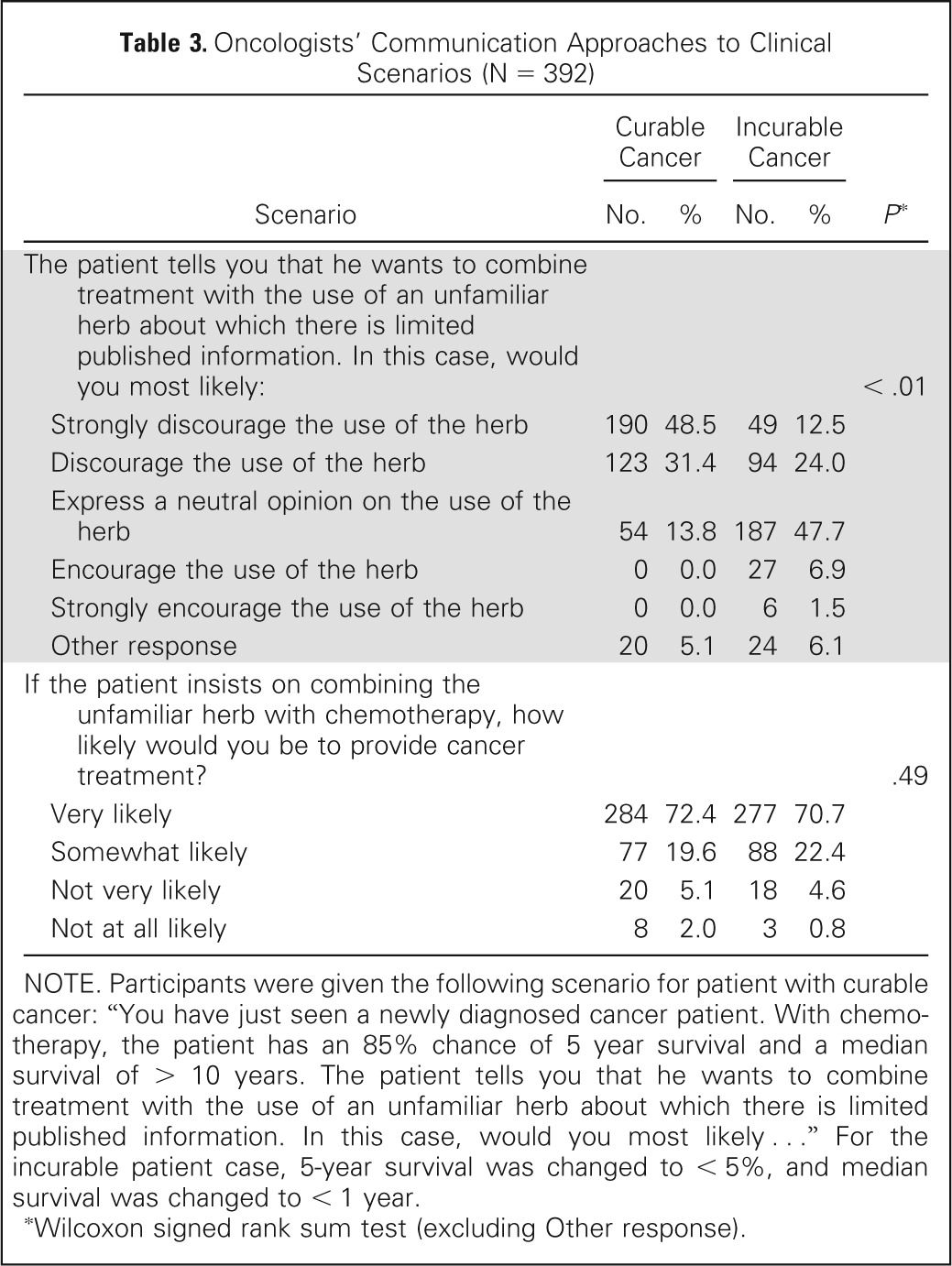Table 3.
Oncologists' Communication Approaches to Clinical Scenarios (N = 392)

| Scenario | Curable Cancer |
Incurable Cancer |
P* | ||
|---|---|---|---|---|---|
| No. | % | No. | % | ||
| The patient tells you that he wants to combine treatment with the use of an unfamiliar herb about which there is limited published information. In this case, would you most likely: | < .01 | ||||
| Strongly discourage the use of the herb | 190 | 48.5 | 49 | 12.5 | |
| Discourage the use of the herb | 123 | 31.4 | 94 | 24.0 | |
| Express a neutral opinion on the use of the herb | 54 | 13.8 | 187 | 47.7 | |
| Encourage the use of the herb | 0 | 0.0 | 27 | 6.9 | |
| Strongly encourage the use of the herb | 0 | 0.0 | 6 | 1.5 | |
| Other response | 20 | 5.1 | 24 | 6.1 | |
| If the patient insists on combining the unfamiliar herb with chemotherapy, how likely would you be to provide cancer treatment? | .49 | ||||
| Very likely | 284 | 72.4 | 277 | 70.7 | |
| Somewhat likely | 77 | 19.6 | 88 | 22.4 | |
| Not very likely | 20 | 5.1 | 18 | 4.6 | |
| Not at all likely | 8 | 2.0 | 3 | 0.8 | |
NOTE. Participants were given the following scenario for patient with curable cancer: “You have just seen a newly diagnosed cancer patient. With chemotherapy, the patient has an 85% chance of 5 year survival and a median survival of > 10 years. The patient tells you that he wants to combine treatment with the use of an unfamiliar herb about which there is limited published information. In this case, would you most likely …” For the incurable patient case, 5-year survival was changed to < 5%, and median survival was changed to < 1 year.
Wilcoxon signed rank sum test (excluding Other response).
